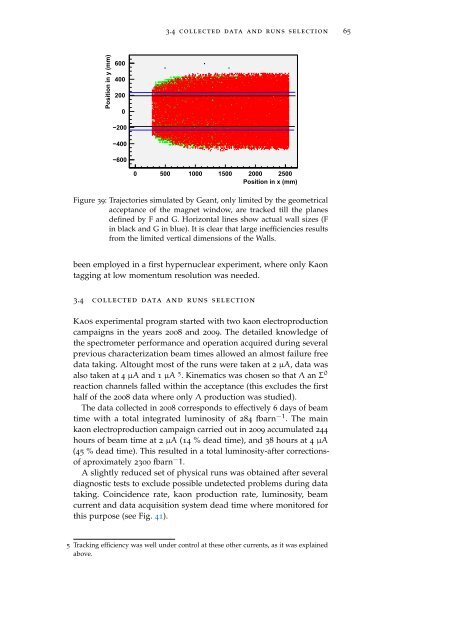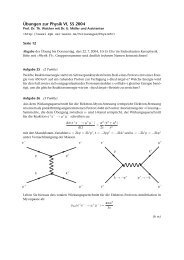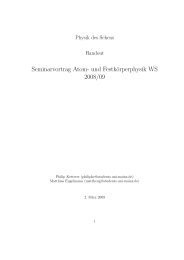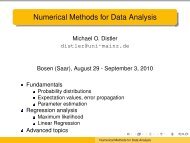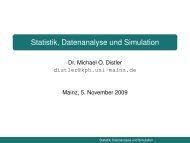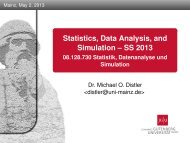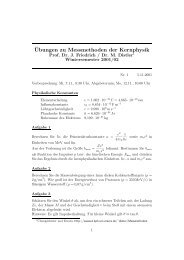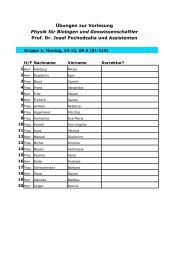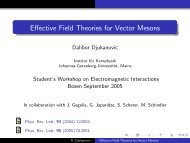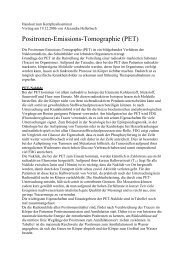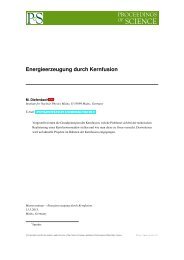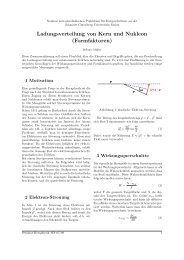A Classic Thesis Style - Johannes Gutenberg-Universität Mainz
A Classic Thesis Style - Johannes Gutenberg-Universität Mainz
A Classic Thesis Style - Johannes Gutenberg-Universität Mainz
Create successful ePaper yourself
Turn your PDF publications into a flip-book with our unique Google optimized e-Paper software.
Position in y (mm)<br />
600<br />
400<br />
200<br />
0<br />
−200<br />
−400<br />
−600<br />
3.4 collected data and runs selection 65<br />
0 500 1000 1500 2000 2500<br />
Position in x (mm)<br />
Figure 39: Trajectories simulated by Geant, only limited by the geometrical<br />
acceptance of the magnet window, are tracked till the planes<br />
defined by F and G. Horizontal lines show actual wall sizes (F<br />
in black and G in blue). It is clear that large inefficiencies results<br />
from the limited vertical dimensions of the Walls.<br />
been employed in a first hypernuclear experiment, where only Kaon<br />
tagging at low momentum resolution was needed.<br />
3.4 collected data and runs selection<br />
Kaos experimental program started with two kaon electroproduction<br />
campaigns in the years 2008 and 2009. The detailed knowledge of<br />
the spectrometer performance and operation acquired during several<br />
previous characterization beam times allowed an almost failure free<br />
data taking. Altought most of the runs were taken at 2 µA, data was<br />
also taken at 4 µA and 1 µA 5 . Kinematics was chosen so that Λ an Σ 0<br />
reaction channels falled within the acceptance (this excludes the first<br />
half of the 2008 data where only Λ production was studied).<br />
The data collected in 2008 corresponds to effectively 6 days of beam<br />
time with a total integrated luminosity of 284 fbarn −1 . The main<br />
kaon electroproduction campaign carried out in 2009 accumulated 244<br />
hours of beam time at 2 µA (14 % dead time), and 38 hours at 4 µA<br />
(45 % dead time). This resulted in a total luminosity-after correctionsof<br />
aproximately 2300 fbarn − 1.<br />
A slightly reduced set of physical runs was obtained after several<br />
diagnostic tests to exclude possible undetected problems during data<br />
taking. Coincidence rate, kaon production rate, luminosity, beam<br />
current and data acquisition system dead time where monitored for<br />
this purpose (see Fig. 41).<br />
5 Tracking efficiency was well under control at these other currents, as it was explained<br />
above.


